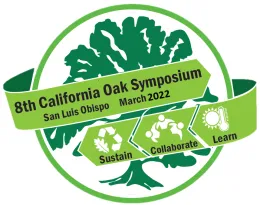#8

Investigating Blue Oak Phenology, Vigor, and Mortality on Central California Rangelands
Rebecca Ozeran, University of California Cooperative Extension
Julie Finzel, University of California Cooperative Extension and Devii Rao, University of California Cooperative Extension
On rangelands in the southern San Joaquin Valley and Central Coast, mature oaks dominate blue oak populations. Past research in California identified a biological bottleneck in which seedlings rarely establish, particularly in areas with lower precipitation. Regional land managers are concerned by oak population decline, where older oaks die and young oaks fail to recruit. These managers value blue oaks for cultural resources, wildlife habitat, biodiversity, shade, and beauty (Rao et al. 2022*). However, we lack regional data on the extent and indicators of blue oak decline. In 2017, 23% of standing blue oaks were dead in Sequoia National Park, while only 5% of standing blue oaks were dead under pre-drought conditions (Das et al 2020). Site variation makes it difficult to extrapolate mortality rates across the landscape. Thus, we will establish long-term monitoring plots in Madera, San Benito, Tulare, and neighboring counties to quantify trends in regional blue oak populations.
Initial plot data describe current blue oak mortality, oak size, and stand density. Long-term, we will track individual and plot-scale mortality, as well as vigor based on leaf canopy. To track annual variation in growth we will measure shoot elongation on branches. When present, seedlings and acorn crops will be counted or estimated, respectively. Time-lapse cameras will document oak phenology, including leaf-out and leaf drop. Weather data collected near each site will be correlated to oak activity.
We will present preliminary data from three plots established in Fall 2021 and describe our ongoing monitoring methods. In a future stage of this project, we will collect and correlate land-use data to population information to identify practices that support resilient blue oak populations in the region. Over time, we will gain greater understanding of indicators of blue oak population decline, and will highlight best practices for land managers to sustain blue oak populations.
*Abstract also published in these proceedings, submitted by Rao, Finzel, and Ozeran. Ranchers and Land Managers Want More Research and Extension to Better Manage Rangeland Oaks: Responses to a Survey.
